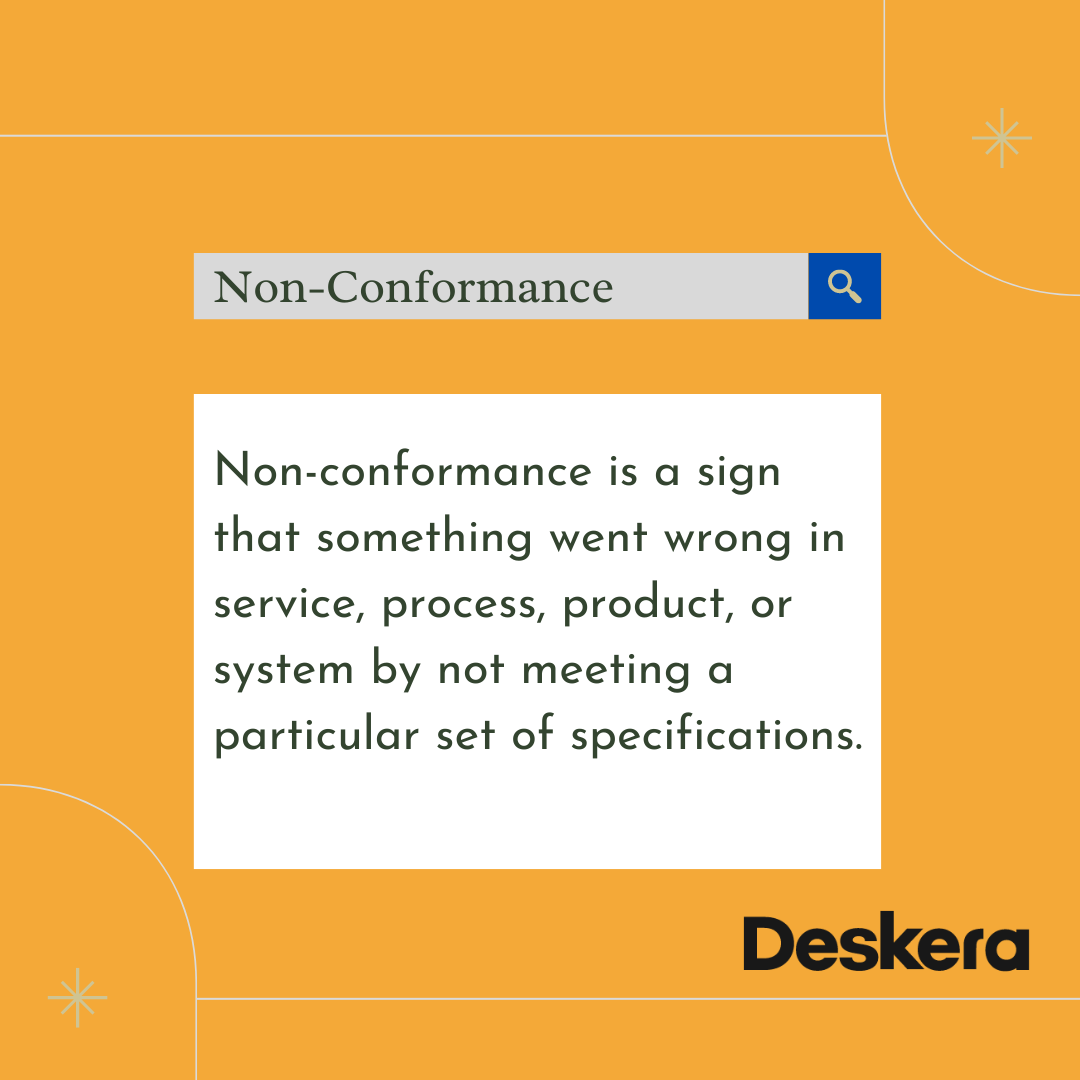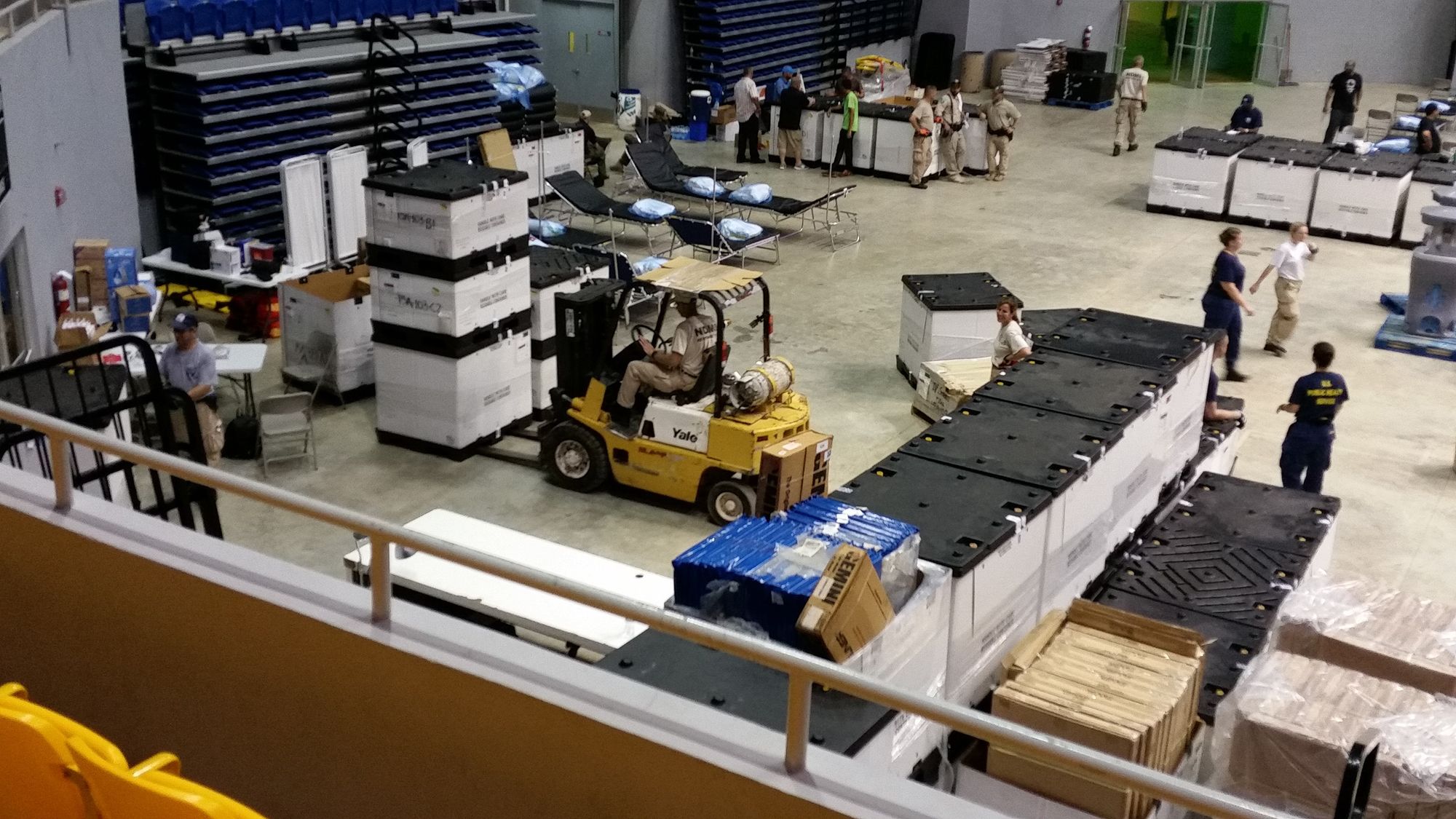“It is most important that top management be quality-minded. In the absence of sincere manifestation of interest at the top, little will happen below.” — Mr. Joseph M. Juran (considered to be the Father of Quality Control)
Quality— that’s what determines the success of your business. If the quality of your product declines, customers will inevitably go to your competitors. You must therefore never compromise on the quality of your products.
Modern production methods must be used to prevent the overall consumer experience from being affected by poor products. After all, it helps in order to generate fair returns. However, both good and poor quality come at a cost.
In this guide, we'll learn everything there is to know about cost of poor quality (COPQ) and its related concepts. Let’s take a look at the table of content:
- What is Cost of Poor Quality?
- What is Cost of Poor Quality in Manufacturing?
- Calculating Cost of Poor Quality in Manufacturing?
- What is the Objective of Cost of Poor Quality (COPQ)?
- Why Cost of Poor Quality (COPQ)?
- Key Components of Cost of Poor Quality (COPQ)?
- Implementing Steps in Cost of Poor Quality (COPQ)?
- What are the Seven Deadly Wastes?
- What are the Benefits of Attending Costs of Poor Quality (COPQ)?
- What are the Disadvantages of Cost of Poor Quality (COPQ)?
- Contextualizing the Cost of Poor Quality
- Example of How Cost of Poor Quality (COPQ) Operates
- Best Practices to Follow to Lower COPQ
- Advanced Manufacturing Approaches to Minimize Quality Issues
- ERP (Enterprise Resource Planning) systems used by COPQ
- Improvement of Data Accuracy linked to Cost of Poor Quality
- Frequently Asked Questions (FAQs) on Costs of Poor Quality?
- How Deskera Can Assist You?
Let's Start!
What is Cost of Poor Quality?
Cost of Poor Quality, or COPQ, is the term used to describe the quality-related cost associated with providing customers poor services or goods. It refers to both the direct and indirect costs associated with defects a process generates.

Direct expenses are easy to detect and include rework, disposal, labor, material, and recall costs. However, your company's profitability can also be significantly impacted by indirect costs. These costs include:
- Brand reputation damage
- Warranty costs
- Returns
- Compliance failure
- Increased audits
- Excess inventory
- Excessive overtime
- Lost sales
The cost of quality is the culmination of cost of good quality and poor quality
What is Cost of Poor Quality in Manufacturing?
The cost of poor quality and the cost of good quality are the two components of the metric cost of quality (CoQ). The major cost of good quality is setting up the procedures to ensure it. Business cases are often developed in response to quality challenges in order to invest in systems that improve good quality.
Low quality has a lot of cost factors. Here are some cost areas that are usually simple to identify:
- Recall costs
- Rework
- Capacity wasted on making scrap or rework
- Scrap
- Warranty claims
- Time wasted making poor quality products
- Direct and indirect materials used in scrap
- Customer fines for delivering off-spec products
- Energy wasted producing unusable materials
However, they only partially offset the real cost of poor quality. Consider further possible outcomes:
- Workers who have to redo work or make replacements for scrap must labor overtime
- The supply chain is sped up, capacity is not being utilized, and planning is delayed when scrap and rework are performed out of sequence.
- Spend enough time and effort determining the underlying causes, creating remedial and preventative action plans, and sometimes re-engineering the definitions of the process, the product, or the supply requirements in order to prevent future quality concerns.
- Dealing with customer complaints, repairing brand damage, and regaining trust while controlling potential risks to employee health and safety and adjusting expectations
Any subgroup of those costs has the potential to reach a significant total. Quantifying the issues comes next following problem identification. Operations and finance employees frequently need to work together to comprehend the full cost of poor quality.
Quality control in manufacturing determines a manufacturer's ability to continue operations and maintain their enterprises. Since quality is something that consumers pay for, a low-quality product is likely to fall short of expectations. Therefore, it would be useless to pay for the production of such goods.
There is only one way to prevent quality problems from happening. The task must be completed flawlessly by the manufacturer the first time. To make it happen, they must have the proper systems in place in addition to important certifications like the AS9100 and ISO 9001 certifications.
Calculating Cost of Poor Quality in Manufacturing?
The manufacturing company's COPQ consists of the total cost of all associated costs incurred as a consequence of failure, whether internal or external. So, the formula for poor quality is:
Therefore, you must select the time period in order to keep your data organized when computing COPQ.
Then tally up all the variations and waste, double your total by how long it took to fix the issue, and divide the result by two. Your manufacturing company should bear the cost of poor quality:
What is the Objective of Cost of Poor Quality (COPQ)?
“Quality planning consists of developing the products and processes required to meet the customer’s needs.”
The costs of executing a quality activity, implementing quality improvements, and reaching goals must be properly managed in order for quality to have the desired long-term impact on the business.
Moreover, a quality job is necessary for the workplace organization to avoid any complaints or flaws that cause a bad reputation and slow growth.
If you want to provide a high-quality service to consumers and have a more successful project, you must consider the high implementation costs of low quality. Paying these fees might be the wisest course of action to stop any losses in the future.
This further enables you to access superior results and make it simpler for you to identify the problems. And problems like poor quality or anything else won't affect you.
Further, you can advance with your employees to increase your business' production level and achieve greater outcomes.
These costs are viewed as the precise quality indicator that is necessary for every business or organization. Consider basing your estimation of these costs on a study of the costs of quality.
Another essential tool for communication is quality's pricing. What a powerful tool it may be, as Philip Crosby showed, to promote awareness of the importance of quality.
He referred to the measurement as the "price of nonconformance" and said that businesses voluntarily pay for poor quality.
For many businesses, true quality-related costs could amount to 15-20% of sales revenue, and for some, they might even account for 40% of total operating expenses.
Costs related to inadequate quality will often make up 10% to 15% of operations in a successful organization. Effective attempts for quality improvement can drastically reduce this, directly increasing revenues.
Since they must accurately reflect the quality effort, it is preferable to derive these expenses from a study of the costs of quality.
Such an analysis can be used to assess the efficiency of quality management while also identifying areas for improvement and potential cost savings.
Once established, the quality-cost system should be dynamic and help the project succeed.
Why Cost of Poor Quality (COPQ)?
Check the following points that describe the need of cost of poor quality (COPQ):
- COPQ communicates in management language.
- Aids in setting priorities for improvement measures.
- COPQ explains how quality affects profit.
- Improves culture of continuous improvement
- Helps to detect wastes in the system and optimizing the use of resources.
As advanced manufacturing expands, businesses are using augmented reality (AR) and artificial intelligence (AI).
Despite these changes, COPQ is still highly important. This explains why there are top ERP software applications and packages available.
They can utilize the COPQ to calculate results and publish them while using business solutions efficiently.
Key Components of Cost of Poor Quality (COPQ)?
COPQ is a tool for estimating rather than precise measurement. It is employed to aid in the identification initiatives, assess financially viability, and establish priorities among potential projects. It can assist a company in determining which initiatives will yield the best returns.
Calculating the financial costs of waste or poor quality in an existing process is the main goal of COPQ. These expenses, which are more commonly known as failure costs, can be divided into four groups:
- Internal Failure Costs
- External Failure Costs
- Appraisal Costs
- Prevention Costs
Even though not every failure cost can be precisely calculated, it is usually possible to calculate enough of them to have a high level of confidence in the results.
Let's examine each of these components in more detail.
Internal Failure Costs
Costs associated with product or service flaws discovered prior to customer delivery are included in this category. Costs associated with internal failure include items like:
Scrap: Materials produced when raw materials are not used to their full potential or when goods or services are discarded because they are unfit for sale.
Rework: The processes required to produce new products and services to replace those that are discarded or to correct defects in current products and services.
Failure Analysis: Analyzing defective goods or services takes time, especially when there are many defects and a lot of factors to consider.
Re-inspection and Re-testing: Costs associated with further examinations or testing necessary to verify that flaws have been correctly addressed.
External Failure Costs
This tool category includes the expenses incurred by an organization as a result of flaws found after the product or service has been delivered to the customer. These are a few instances of external failure costs:
Returns: The cost of labor for processing returns, paying customers back for returned goods, and refurbishing and/or restocking the merchandise.
Warranty charges: The expenses incurred by the company to uphold the warranty on subpar products and services; these expenses could include shipping, repairs, and even full replacements.
Allowances: Distributors and other supply chain participants frequently receive credits for poor products or services.
Adjustments for Complaints: Resolving customer complaints by lowering retail prices or by introducing products or services with added value.
Appraisal Costs
This category includes the expenses incurred by an organization to assess whether a good or service complies with quality requirements and standards. The following are some examples of appraisal costs:
Inspection: Any regular inspection procedures, whether they are carried out during development, production, delivery, etc., for products or services.
Testing: All regular procedures involving subjecting products and services to testing procedures to ensure quality standards.
Quality Audits: Audits that are performed on a regular basis, but usually at random, to assess the quality of a product or service.
Prevention Costs
The costs required by an organization to carry out any kind of defect prevention for a good or service. Costs associated with prevention include items like:
Policies and Procedures: The quality of the materials used, labor standards, etc., are a few examples of regulations and standards that are designed, implemented, and assessed in order to affect the chance of defects.
Design Review: Designs for goods and services are examined and judged for flaws or problems before production.
Training and Education: Activities including staff education and training with the aim of raising skill levels and lowering the likelihood of defects.
Implementing Steps in Cost of Poor Quality (COPQ)?
Following we have discussed steps to implement cost of poor quality (COPQ) for your business. Let’s learn:
- Consult with finance department to ensure the cost data is accurate.
- Put corrective measures in place, such as streamlining the inspection process and automating quality inspections.
- Determine the systems, equipment, and processes' present capacities.
- Obtain information on the expenses related to evaluation, internal and external failure, evaluation, and prevention.
- Describe the quality aims and ambitions of the organization.
- Costs of quality are examined before and after process improvement
- Prioritize your efforts and consider quality-related expenditures.
- Present the quality cost improvements to upper management.
What are the Seven Deadly Wastes?
One technique for conducting COPQ analysis is to examine the so-called Seven Deadly Wastes. These are the most typical waste-producing locations and the most promising opportunities for business growth. Check the following seven deadly wastes:
What are the Benefits of Attending Costs of Poor Quality (COPQ)?
The benefits of attending the COPQ are numerous for you. For instance, COPQ can help companies become more competitive.
By enhancing their processes and quality, businesses can become more effective and competitive. Participating in COPQ also entitles you to further savings, decreased wait times, and more customer satisfaction.
COPQ is crucial for producers who wish to keep control over the production process and product quality. It provides the following benefits, which have been demonstrated through time:
Lowered Total Costs
Depending on how soon a problem is found, a product or service's repair cost will change.
It could be challenging and expensive to disassemble the product to uncover the problem if it is discovered after the product has been built. The most expensive defects are those that affect the consumer since they run the danger of decreasing brand confidence.
Happy Customers
As a customer, you don't want to waste your time working with a firm that has a poor reputation. Any quality issues are discovered and resolved prior to client delivery, ensuring that the only interactions the customer has with the product is when it reliably functions.
Reduced Lead Times
The sooner a flaw is found, the quicker it may be fixed in a product. After the product has been made, if a flaw is found, it may need to be disassembled, using up resources that could have been used to make a new product instead.
If the client finds a problem, the goods must be returned, or a repair professional must travel to the customer's location, which adds even more time to the repair process.
What are the Disadvantages of Cost of Poor Quality (COPQ)?
What happens if the manufacturing process has little to no quality assurance?
The cost of poor quality is reduced, and further issues are avoided with early detection of quality issues. Following we have discussed the shortcomings of COPQ. Let’s learn:
1. Wastage of Human Resources
There will be a need for more product quality checks and controls. The management system and quality managers are put under pressure, which leads to inefficient labor usage and issues with capacity planning.
2. Harm the Company's Credibility
The safety and well-being of your clients come first. When a product a firm creates falls short in either of those two categories, it damages the company's reputation.
3. Additional Spending
You will need to spend additional money on the issue to duplicate or improve the products once you have identified the areas where your organization is struggling.
4. A schedule Slip-up
Since the producers are a key component of the supply chain, a slowdown in the production process will cause a delay in the supply schedule.
5. Rivals Steal your Customers
While you figure out the costs associated with the quality and rebuild your brand, your competitors can come in and steal your customers.
6. Financial Loss
If a sizable amount of the anticipated revenue is spent on product inspection, research, and repair for subpar, flawed items, the manufacturing company might incur a financial loss.
Contextualizing the Cost of Poor Quality
Researchers are generally aware of the substantial costs associated with poor quality. The basic trend is clear, even though the hard data varies from industry to industry—the cost of quality rises dramatically when defects are found closer to the consumer.
On the other hand, the cost of quality is better since they occur sooner in the value chain. Non-conformances must be reduced as quickly as feasible, that much is clear.

Moreover, organization's quality management success depends on IT's capacity to facilitate quick resolution of quality issues. Without the ability to comb through reliable historical data to uncover root causes, any quality management expert would struggle to reliably identify and resolve issues before products travel down the value chain.
Unfortunately, this is the period when the weaknesses and limitations of your company's current software and IT infrastructure may become apparent, and the actual scenario is all too often far from ideal. According to Aberdeen Group research, a large number of businesses still struggle to make the most of quality indicators.
You might find this conclusion perplexing given that your organization has made significant investments in new technology and IT architecture over the past few years specifically to address this problem.
Furthermore, your organization's cost of quality metrics is directly impacted by your IT staff's ability to deliver prompt and accurate data to the relevant people before items move on to manufacturing and downstream to your customers.
However, following we have listed many factors to consider when evaluating the price of poor quality. Check them:
- Poor quality can lead to increased costs for warranty claims, rework, and customer attrition in addition to poorer productivity and profitability. To fully understand the price of poor quality, it is essential to consider each of these factors.
- Rework and warranty claims are typically the most evident and immediate costs of poor quality. Rework can be time- and money-consuming, and revenue might be impacted by warranty claims. Reduced production may also be the result of poor quality, and this can be brought on by staff inactivity, resource loss, and scrap.
- Finally, poor quality can lead to customer attrition, which can be costly in terms of lost revenue and damaged brand perception.
When calculating the cost of inadequate quality, it is essential to take each of these factors into consideration. Businesses will be stronger able to address the issue and mitigate the effects of inadequate quality if they take this action.
Example of How Cost of Poor Quality (COPQ) Operates
Quality assurance is absolutely necessary for an organization to succeed. Businesses can increase their bottom line by reducing waste (raw materials, logistical costs, and idle man hours).
When managing a project, you must clarify what your organization deems a defect to be in order to determine the COPQ.
You'll also keep track of how many mistakes you make as you work on a project.
Let’s take a look at the following example:
Best Practices to Follow to Lower COPQ
Before continuing, it's crucial to comprehend a few things. These can be used to determine the cost of high and low quality.
- Remembering that the quality initiative will always lessen defects is strongly encouraged. Nevertheless, it is unusual to have zero flaws for an extended length of time. Utilizing the proper strategy to help you rapidly identify the issue can help you save money. Verification may incur additional costs, but they will be considerably less than the costs of errors that are not found until the drawn-out process.
- It is also advised that, if the new items have been put into process or production early and are experiencing multiple or even substantial flaws problems, you take fast action to assign the people needed to deal with the defects before moving on to other projects. Delaying action may force you to take significant risks with the cost of repairs and the reputation of your client.
- It goes without saying that it might be quite challenging to determine each hard cost and soft cost associated to the COPQ in quality for the project. It would be advantageous if you could be as accurate as your data would permit. All restrictions on the data must be lifted. You make sure to keep the goal of understanding the ballpark savings (or rough savings) in mind.
The majority of the time, actual savings for a given project will never match your predicted savings if the improvement has been making progress at a certain point in the play.
Advanced Manufacturing Approaches to Minimize Quality Issues
It is essential to measure the cost of low quality to provide specific recommendations for how to enhance.
First, the best opportunities—both visible and unseen—are determined. Second, it offers a budgeting template for programs that seek to cut those expenses. Modern production methods can look for patterns and avoid problems.
Avoiding problems with quality
Quality problems might result from communication problems. The majority of industrial processes are complex and comprise many interconnected steps. As a result, improving communication between persons and process steps can significantly lower the cost of poor quality.
Communication can be improved with work cells that are connected. Each area may monitor what is happening in the early or earlier stages of the production process and make the required preparations with the aid of this technology. They can also alert individuals involved in the succeeding process steps if there have been abnormalities such out-of-spec supplies, rework, or equipment repairs.
Another significant handoff occurs when employees working different shifts switch over. A thorough accounting of what occurred during a shift may be done fast and readily with the technologies of today.
Systems can highlight non-conformance issues so that the shift that follows can once again see where problems occurred. A meeting might frequently focus on resolving those challenges before creating more product.
Recognizing Quality Patterns
Manufacturing data collection is now more convenient and affordable than ever. An expanded image of the manufacturing process and quality issues can be provided through the Internet of Things (IoT), which can provide additional data points.
Businesses can start noticing trends by using advanced analytics to the vast amounts of data generated by equipment, the Internet of Things (IoT), and other sources.
On-time production follows a trend. Quality problems can be detected using this approach. Different quality issues could exhibit distinctive patterns as well. Understanding how these patterns relate to quality can greatly boost a company's capacity to reduce certain costs.
A company can use machine monitoring to track these patterns as they develop. By swiftly carrying out human training, equipment calibration or repair, material management, or other preventative steps, the business may in some situations be able to avoid the quality issue from developing.
ERP (Enterprise Resource Planning) systems used by COPQ
Enterprise resource planning systems provide the qualities needed to lower the cost of poor quality.
The resources that are already included in the ERP enable monitoring of the industrial environment, which has several benefits. Following we have listed some points:
- Enhancing the quality standards for all products or goods
- Reduced error rates
- Real-time monitoring and recording of the production line's performance
- Elimination of waste and application of lean techniques in production
- Transparency throughout the entire manufacturing process
Improvement of Data Accuracy linked to Cost of Poor Quality
A number of variables can affect the price of inaccurate low-quality data. Check the following points:
- To improve the accuracy of this data, businesses should first identify and keep track of the primary causes of errors and faults. Then, to prevent these errors and faults, procedures and safety measures should be put in place.
Finally, they should continually examine and improve these processes and controls to ensure that the data remains correct.
- Businesses can raise the accuracy of data at the expense of poor quality by being proactive in identifying and correcting errors and weaknesses.
By identifying the underlying causes of mistakes and defects, businesses may put procedures and safeguards in place to prevent them from occurring. Businesses can further ensure the accuracy of the data by continuously reviewing and enhancing these processes and controls.
Frequently Asked Questions (FAQs) on Costs of Poor Quality?
Following we have discussed some crucial frequently asked questions (faqs) associated with costs of poor quality (COPQ). Let’ take a look:
Que 1: When You Should Use the Cost of Poor Quality (COPQ)?
Ans: Employing COPQ, organizations can pinpoint places where internal and external failure costs can be decreased while quality is still improved. Basically, through increasing investment on prevention.
Que 2: The cost of preventative programs varies. Can I get rid of them and say I saved money in the process?
Ans: Although preventative measures may be costly, when carried out correctly, they are less costly than the defects they are intended to shield against.
It is crucial to make an effort to calculate the cost of poor quality and contrast it with the price of preventative measures like programs for material testing and proper employee training.
If the preventative program is more expensive, think about how to restructure it to make it less expensive. Preventative measures ought to be more cost-effective than corrective ones since they stop defects from developing.
Que 3: Should only significant savings be considered COPQ?
Hard and soft cost savings will be prioritised differently by different managements. Soft costs are sometimes completely disregarded by businesses, but this is not recommended.
Even while everyone loves to see hard savings since they are easier to prove, soft savings should at the very least be acknowledged as existing.
For instance, a current project has eliminated the need for an entirely new storage expansion. If the money for the storage extension wasn't already set aside in the budget, its absence is viewed as a soft savings.
These discounts won't be seen in the final price. Even so, if the project hadn't been finished, there would still have been a need for more storage.
How Deskera Can Assist You?
Deskera MRP allows you to closely monitor the manufacturing process. From the bill of materials to the production planning features, the solution helps you stay on top of your game and keep your company's competitive edge.

Deskera ERP and MRP system can help you:
- Manage production plans
- Maintain Bill of Materials
- Generate detailed reports
- Create a custom dashboard
Deskera ERP is a comprehensive system that allows you to maintain inventory, manage suppliers, and track supply chain activity in real time, as well as streamline a variety of other corporate operations.
Deskera Books enables you to manage your accounts and finances more effectively. Maintain sound accounting practices by automating accounting operations such as billing, invoicing, and payment processing.
Deskera CRM is a strong solution that manages your sales and assists you in closing agreements quickly. It not only allows you to do critical duties such as lead generation via email, but it also provides you with a comprehensive view of your sales funnel.
Deskera People is a simple tool for taking control of your human resource management functions. The technology not only speeds up payroll processing but also allows you to manage all other activities such as overtime, benefits, bonuses, training programs, and much more.
This is your chance to grow your business, increase earnings, and improve the efficiency of the entire production process.
Key Takeaways
We've arrived at the last section of this guide. Let's have a look at some of the most important points to remember:
- Cost of Poor Quality, or COPQ, is the term used to describe the quality-related cost associated with providing customers poor services or goods. It refers to both the direct and indirect costs associated with defects a process generates.
- The sooner a flaw is found, the quicker it may be fixed in a product. After the product has been made, if a flaw is found, it may need to be disassembled, using up resources that could have been used to make a new product instead.
- The cost of quality is better since they occur sooner in the value chain. Non-conformances must be reduced as quickly as feasible, that much is clear.
- Poor quality can lead to increased costs for warranty claims, rework, and customer attrition in addition to poorer productivity and profitability. To fully understand the price of poor quality, it is essential to consider each of these factors.
- It is essential to measure the cost of low quality to provide specific recommendations for how to enhance. First, the best opportunities—both visible and unseen—are determined. Second, it offers a budgeting template for programs that seek to cut those expenses.
- It is crucial to make an effort to calculate the cost of poor quality and contrast it with the price of preventative measures like programs for material testing and proper employee training.
Related Articles












